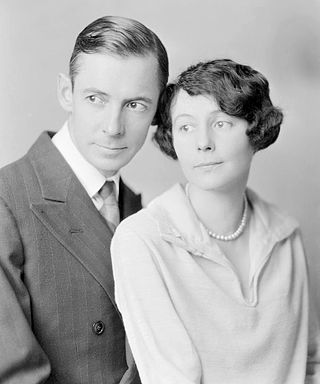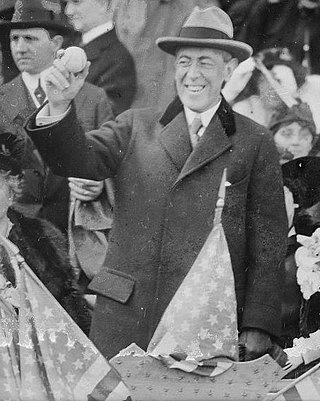Related Research Articles

The University of California, Berkeley is a public land-grant research university in Berkeley, California. Established in 1868 as the University of California, it is the state's first land-grant university and the founding campus of the University of California system. Its fourteen colleges and schools offer over 350 degree programs and enroll some 32,000 undergraduate and 13,000 graduate students. Berkeley ranks among the world's top universities.

Edward Franklin Albee III was an American playwright known for works such as The Zoo Story (1958), The Sandbox (1959), Who's Afraid of Virginia Woolf? (1962), A Delicate Balance (1966), and Three Tall Women (1994). Some critics have argued that some of his work constitutes an American variant of what Martin Esslin identified and named the Theater of the Absurd. Three of his plays won the Pulitzer Prize for Drama, and two of his other works won the Tony Award for Best Play.

Eugene Gladstone O'Neill was an American playwright awarded the 1936 Nobel Prize in Literature. His poetically titled plays were among the first to introduce into the U.S. the drama techniques of realism, earlier associated with Russian playwright Anton Chekhov, Norwegian playwright Henrik Ibsen, and Swedish playwright August Strindberg. The tragedy Long Day's Journey into Night is often included on lists of the finest U.S. plays in the 20th century, alongside Tennessee Williams's A Streetcar Named Desire and Arthur Miller's Death of a Salesman.

Playwrights Horizons is a not-for-profit Off-Broadway theater located in New York City dedicated to the support and development of contemporary American playwrights, composers, and lyricists, and to the production of their new work.

Alan Jay Heeger is an American physicist, academic and Nobel Prize laureate in chemistry.

Dorothy Heyward was an American playwright.

Polymer science or macromolecular science is a subfield of materials science concerned with polymers, primarily synthetic polymers such as plastics and elastomers. The field of polymer science includes researchers in multiple disciplines including chemistry, physics, and engineering.
David Lindsay-Abaire is an American playwright, lyricist and screenwriter. He received the Pulitzer Prize for Drama in 2007 for his play Rabbit Hole, which also earned several Tony Award nominations.

Charles Edward Gordone was an American playwright, actor, director, and educator. He was the first African American to win the annual Pulitzer Prize for Drama and he devoted much of his professional life to the pursuit of multi-racial American theater and racial unity.
Howard Oliver Sackler was an American screenwriter and playwright who is best known for writing The Great White Hope. The Great White Hope enjoyed both a successful run on Broadway and, as a film adaptation, in movie theaters. James Earl Jones and Jane Alexander both starred in the original Arena Stage production of the play in Washington, DC, then brought their roles to Broadway and later to the film version. Both Jones and Alexander received Academy Award nominations for their work in the movie.

Quiara Alegría Hudes is an American playwright, producer, lyricist and essayist. She is best known for writing the book for the musical In the Heights, and screenplay for its film adaptation. Hudes' first play in her Elliot Trilogy, Elliot, A Soldier's Fugue was a finalist for the 2007 Pulitzer Prize for Drama; she received the 2012 Pulitzer Prize for Drama for her second play in that trilogy, Water by the Spoonful.

Events from the year 1915 in the United States.

Ardem Patapoutian is an Armenian-American molecular biologist, neuroscientist, and Nobel Prize laureate. He is known for his work in characterizing the PIEZO1, PIEZO2, and TRPM8 receptors that detect pressure, menthol, and temperature. Patapoutian is a neuroscience professor and Howard Hughes Medical Institute investigator at Scripps Research in La Jolla, California. In 2021, he won the Nobel Prize in Physiology or Medicine jointly with David Julius.
References
- ↑ "STAGE" . Retrieved 25 October 2011.
- ↑ "Film and Media Studies:Nancy Kawalek" . Retrieved 25 October 2011.
- ↑ Matt Kettmann. "Third Annual Playwriting Competition Puts Science on the Stage". Santa Barbara Independent. Retrieved 25 October 2011.
- ↑ "Tony, Olivier, Pulitzer & Nobel Winners to Judge International Script Competition in 2010". broadwayworld.com. Retrieved 25 October 2011.
- ↑ "Science Friday Video: Splitting Infinity". Science Friday. Archived from the original on 26 October 2011. Retrieved 25 October 2011.
- ↑ "Frequency Hopping". Hourglass Group. Retrieved 25 October 2011.
- ↑ Gordon Cox (5 August 2008). "Anna Ziegler wins Stage competition". Variety. Retrieved 25 October 2011.
- ↑ "Awards and Prizes". American Theatre. Archived from the original on 14 April 2013. Retrieved 25 October 2011.
- ↑ "STAGE Collaboratory" . Retrieved 25 October 2011.
